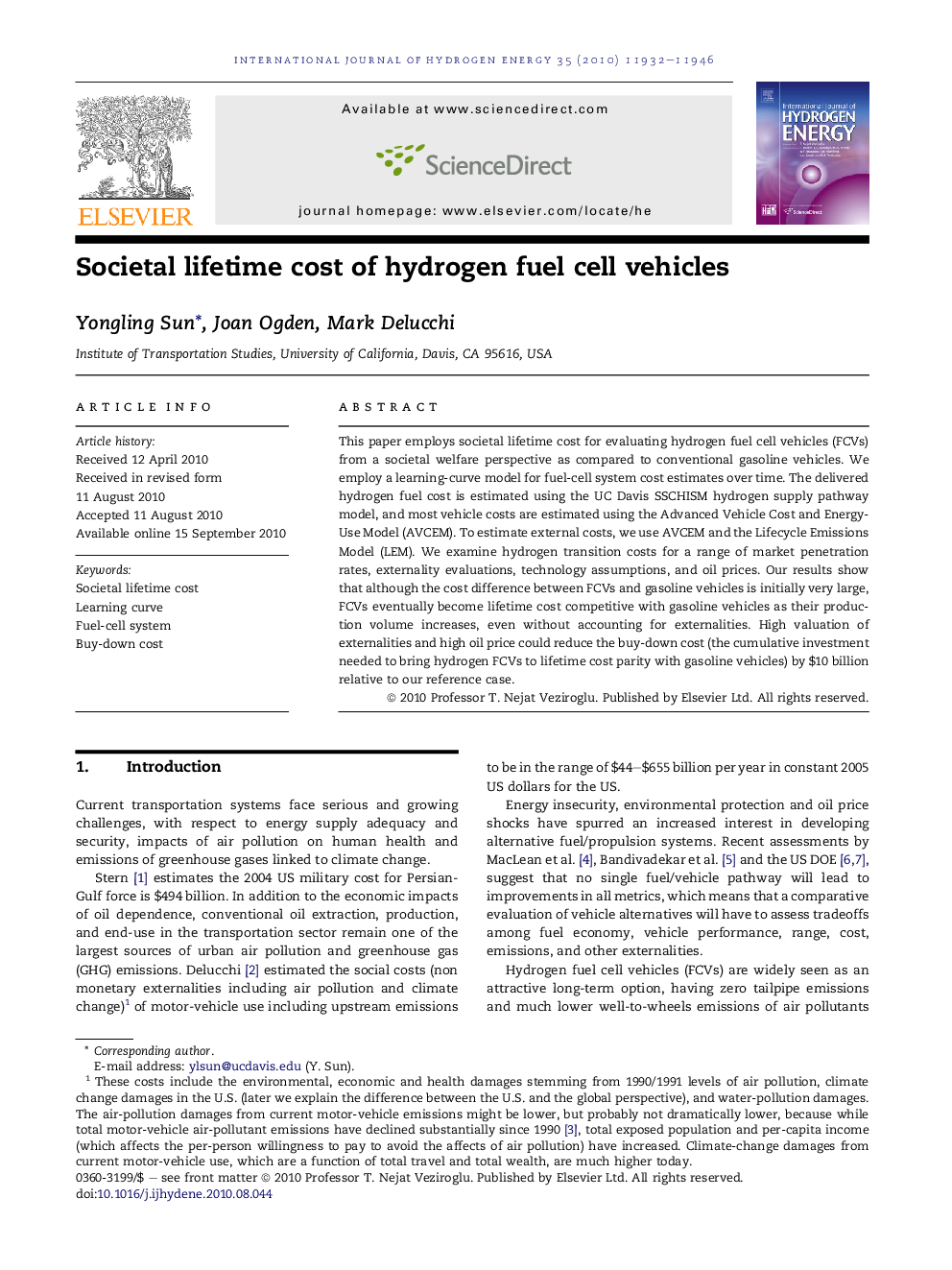| Article ID | Journal | Published Year | Pages | File Type |
|---|---|---|---|---|
| 1272562 | International Journal of Hydrogen Energy | 2010 | 15 Pages |
This paper employs societal lifetime cost for evaluating hydrogen fuel cell vehicles (FCVs) from a societal welfare perspective as compared to conventional gasoline vehicles. We employ a learning-curve model for fuel-cell system cost estimates over time. The delivered hydrogen fuel cost is estimated using the UC Davis SSCHISM hydrogen supply pathway model, and most vehicle costs are estimated using the Advanced Vehicle Cost and Energy-Use Model (AVCEM). To estimate external costs, we use AVCEM and the Lifecycle Emissions Model (LEM). We examine hydrogen transition costs for a range of market penetration rates, externality evaluations, technology assumptions, and oil prices. Our results show that although the cost difference between FCVs and gasoline vehicles is initially very large, FCVs eventually become lifetime cost competitive with gasoline vehicles as their production volume increases, even without accounting for externalities. High valuation of externalities and high oil price could reduce the buy-down cost (the cumulative investment needed to bring hydrogen FCVs to lifetime cost parity with gasoline vehicles) by $10 billion relative to our reference case.
